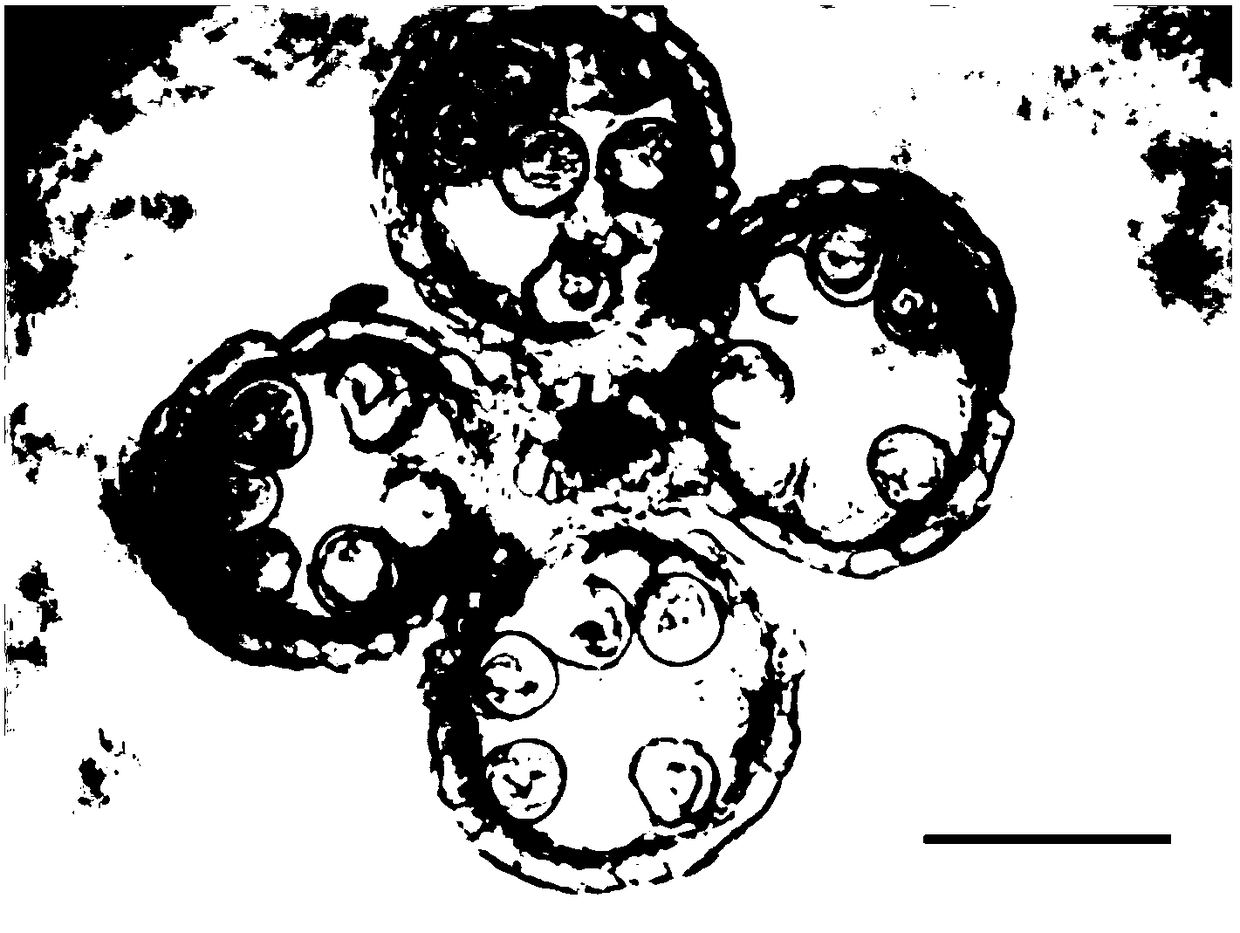Fluorescent labeling method for rapid detection of free calcium ion distribution in rice anthers
A technology of fluorescent labeling and free calcium, applied in fluorescence/phosphorescence, preparation of test samples, analysis of materials, etc., can solve the problems of large anther size, influence on slice angle, cumbersome production process, etc., and achieve rapid water crystallization process, The effect of reducing the generation of air bubbles and the method is quick and easy
- Summary
- Abstract
- Description
- Claims
- Application Information
AI Technical Summary
Problems solved by technology
Method used
Image
Examples
Embodiment 1
[0048] 1. Preparation:
[0049] 1) Prepare tin box without lid:
[0050] First cut the tin foil paper into a square of 30mm×30mm, and use a cuvette of 10mm×10mm×45mm to prepare an uncovered tin box with a side length of 10mm. All sides are required to be flat for the OCT embedding agent. Mark one side of the tin box with a marker pen to identify the direction of the anther tissue or to mark the tissue samples.
[0051] 2) Preparation of Fluo-3AM Incubation Solution:
[0052] Fluo-3AM was prepared into a 1 mM stock solution with dimethyl sulfoxide (DMSO) and stored at -20°C. When using, dilute the stock solution to 20μM with D-Hank's (phenol red free) solution, and set aside at -4°C.
[0053] 2. Anther extraction and embedding:
[0054] 1) Add about 1 / 3 volume of the frozen embedding agent OCT into the tin foil carton, and place it in the constant cold box of the cryostat at -20°C.
[0055] 2) Immediately take a fresh and intact floret of rice, quickly use tweezers to poke the lemma and ...
PUM
| Property | Measurement | Unit |
|---|---|---|
| thickness | aaaaa | aaaaa |
Abstract
Description
Claims
Application Information
 Login to View More
Login to View More - R&D
- Intellectual Property
- Life Sciences
- Materials
- Tech Scout
- Unparalleled Data Quality
- Higher Quality Content
- 60% Fewer Hallucinations
Browse by: Latest US Patents, China's latest patents, Technical Efficacy Thesaurus, Application Domain, Technology Topic, Popular Technical Reports.
© 2025 PatSnap. All rights reserved.Legal|Privacy policy|Modern Slavery Act Transparency Statement|Sitemap|About US| Contact US: help@patsnap.com



